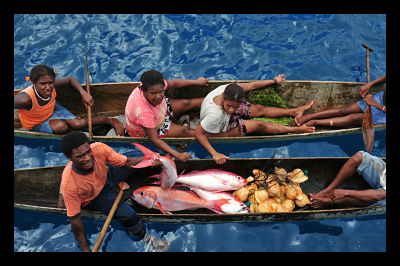Buying Food, a Struggle in the Solomon Islands

A child’s diet for the first 1,000 days of their life is crucial to developing both mentally and physically. Unfortunately, one-third of children under the age of five in the Solomon Islands are considered stunted—too small for their age due to malnutrition. Children who are stunted are often more susceptible to infections and diseases.
The Solomon Islands are not short on food resources. There is a plethora of fish and sea food available; however, it is common for families to not have the funds required to purchase fresh fish or even canned tuna. Of the citizens who live in rural areas, 60 percent rely on food that they grow themselves. The Solomon Islands have ideal conditions for agriculture; however, those living in urban areas do not have access to land and are forced to purchase overpriced food that they simply cannot afford.
According to the Solomon Islands National Statistical Office, many people suffer from “hidden hunger,” meaning while things might not look physically dire, they are actually desperately lacking the proper nutrition to live long, healthy lives.
Solomon Island communities try to look out for each other and share food. Not only do the citizens highly value their family and friends, they also have their own “wantok”—their neighbors and extended family—who they share cheap food with. The cheapest foods can be bought in bulk like rice and noodles, but it can be very dangerous to live off these foods alone. The people of the Solomon Islands experience high rates of anemia and diarrhea from their lack of proper nutrition.
Also contributing to the lack of proper nutrients is overpopulation; the population of the Solomon Islands grows by 2.8 percent each year. More and more people are in need of food, with less and less of it being available due to the small income the islanders receive. Addressing this problem will involve taking a hard look at the economy and finding a way for citizens to receive an adequate income capable of consistently sustaining them.
– Melissa Binns
